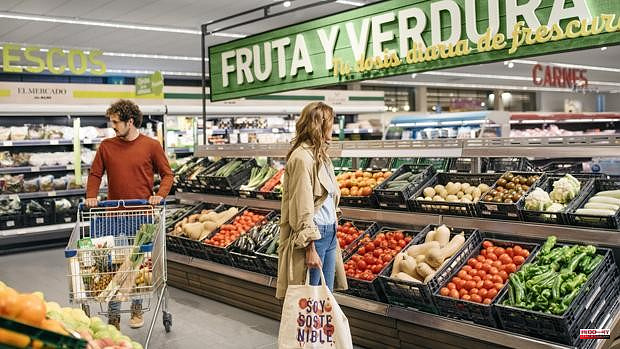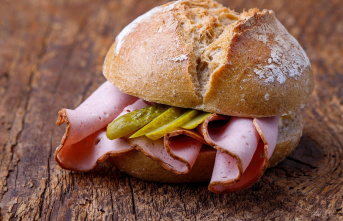The consumption of fresh products such as meat, fish and bread continued its downward trend last year, although they continued to be the most important items in the Spanish shopping basket. Specifically, fresh products (fruit, vegetables, bread, sausages, fresh meat and fish, and eggs) accounted for 41% of the annual food expenditure of national households, which spent a total of 35,614 million euros on the purchase of these items. . These are the data offered by the fourth edition of the Aldi Fresh Products Observatory in Spain. A study that highlights that last year the annual budget of Spaniards for the purchase of fresh products stood at 1,900 euros, 8.6% more than in 2019.
A figure that, however, is still below the 2,192 euros per year of 2020, although this is explained by the record spending in supermarkets that caused health restrictions, which stopped the hotel industry almost in its tracks.
A factor that caused fresh products to be the products that most increased their presence in the shopping cart in 2020. A phenomenon that, however, ended up correcting the relaxation of the health crisis, since in 2021 they experienced a slight decrease, of 6.7%. Even so, there is an increase in spending on fresh products of 6.8% compared to 2019, 1.5 percentage points above the total investment in food.
Aldi justifies this decrease due to inflation, but to a greater extent due to the 'upgrading' that they are noticing when buying. "Cherries, plums, salmon or avocado were some of the products that most increased their presence in the shopping cart and that generally have a higher price compared to the average in their category," they explain. from the company.
Something that did not happen with other fresh categories: in 2021 the consumption of meat and bread was reduced, "mainly due to a drop in the size of the basket and a lower frequency of purchase." Although it is not a recent phenomenon. "This trend had been occurring since 2018, although, in the case of meat, the purchase experienced a rebound in 2020, due to restrictions in the hospitality industry that implied greater consumption at home," they clarify from Aldi.
The company has not yet accounted for the effect of inflation in recent months on fresh produce, but acknowledges an average increase of 1.8% in this category of items over the past year. The rise became more bulky in items such as mussels (30%), sardines or anchovies (21%) and asparagus (13%), followed by smoked sausages and cold cuts (10%) and hake or whiting (9 %). In any case, and despite inflation, Aldi assures that so far this year, fresh products are experiencing an increase of around 9% in consumption.
When buying fresh produce, value for money (57% of preferences) is the main consumer claim according to the supermarket chain's observatory, closely followed by convenience (56%) and quality ( 38%). Also within the demands of the Spaniards, the preference for the fresh product to be seasonal (71%) and the origin stands out: 86% admit that they prioritize the purchase of products of national origin in their shopping basket and, even, who prefer to buy products from their region first (78%).
2












